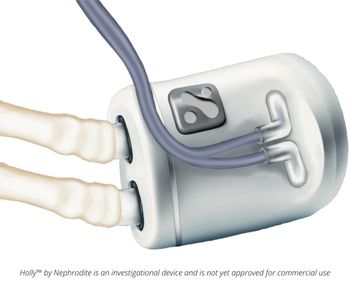
AtriCure launches first-of-its-kind clinical trial to prevent post-operative atrial fibrillation
Key Takeaways
- AtriCure's BoxX-NoAF trial explores combining surgical ablation and LAA exclusion to reduce POAF in cardiac surgery patients, involving up to 960 patients globally.
- The trial aims to demonstrate the superiority of this combined approach over standard care, potentially leading to expanded FDA labeling for AtriCure's devices.
AtriCure's BoxX-NoAF trial explores innovative surgical methods to prevent new-onset atrial fibrillation in cardiac surgery patients, aiming to enhance patient outcomes.
The trial will assess the safety and effectiveness of the AtriCure Isolator Synergy EnCompass clamp and AtriClip Left Atrial Appendage Exclusion System. New-onset
The prospective, multicenter, randomized trial will enroll up to 960 patients at as many as 75 sites worldwide. It is the first randomized controlled study designed to demonstrate the superiority of combining surgical ablation and LAA management over standard care in the prevention of POAF.
“The BoxX-NoAF trial, together with our LeAAPS trial that completed enrollment in July 2025, reflects AtriCure’s vision to advance standards of care by expanding the benefits of surgical ablation and LAA exclusion to a broader population of cardiac surgery patients,” said Michael Carrel, president and CEO of AtriCure. “We expect results of these trials to demonstrate that use of AtriCure devices can safely and effectively improve outcomes for cardiac surgery patients worldwide by reducing the prevalence of new-onset Afib, stroke, and systemic embolization.”
Edward G. Soltesz, a cardiovascular and thoracic surgeon at Cleveland Clinic, said early intervention during surgery could be a game changer. “We believe the BoxX procedure, combining a box lesion and LAA exclusion, could meaningfully lower the occurrence of new-onset Afib and significantly improve the quality of care for these patients,” he said.
If successful, the study could support expanded FDA labeling for AtriCure’s devices, making them the only approved devices for preventing both post-operative and long-term atrial fibrillation.
Advances in atrial fibrillation treatment and surgical innovation
The treatment landscape for atrial fibrillation is evolving rapidly as researchers and clinicians prioritize prevention, minimally invasive intervention, and reduced hospital resource utilization. Post-operative atrial fibrillation remains one of the most common and costly complications following cardiac procedures, driving renewed focus on intraoperative interventions that can be performed concurrently with open-heart surgery. Innovations in surgical ablation technologies are designed to create precise electrical isolation of cardiac tissue to prevent arrhythmogenic signals, and newer devices now enable surgeons to complete these procedures in a single step with increased consistency.
In addition, left atrial appendage management is gaining prominence as a preventive strategy for stroke in patients with Afib. Historically managed through pharmacologic therapy, stroke prevention is now increasingly approached through mechanical LAA exclusion. Advances in surgical tools have improved precision and adaptability, allowing physicians to address stroke risk at the time of cardiac surgery without adding significant operative complexity or time.
Artificial intelligence and digital mapping technologies are also contributing to this evolving field. Surgeons now have access to tools that can analyze electrophysiological data in real time, creating individualized treatment plans and optimizing lesion patterns. These tools may allow for greater predictability in outcomes and could reduce variability across surgical centers.
Another significant trend is the growing body of clinical data supporting early intervention. Instead of waiting for atrial fibrillation to develop post-surgery, physicians are increasingly considering prophylactic surgical approaches in patients with elevated risk profiles. This paradigm shift has the potential to minimize downstream complications such as stroke, heart failure, and prolonged hospitalization.
As data from ongoing clinical trials become available, treatment guidelines are expected to evolve accordingly, potentially making surgical Afib prevention a standard component of cardiac surgical care.
Newsletter
Stay informed and empowered with Medical Economics enewsletter, delivering expert insights, financial strategies, practice management tips and technology trends — tailored for today’s physicians.














